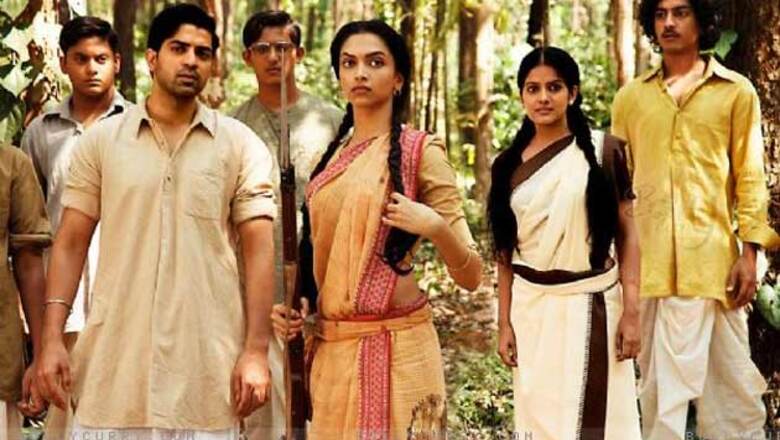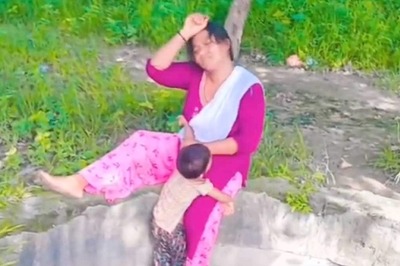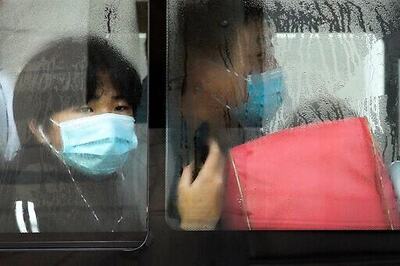
views
A revolution that took root in Maharashtra flowered and bore fruit in Bengal. Today once again Bengalis stand indebted to a Maharashtrian – Ashutosh Gowariker, for bringing the story of the greatest revolutionary in India to the forefront. Based on Manini Chatterjee's book Do and Die, the movie attempts to tell the story of Surjya Sen or Master-da (so called because he is school teacher) who is a follower of the Ananda-math which prescribes celibacy, non attachment and the dedication of one's life to the cause of the country.
Surjya Sen, who had been forced into marriage, abandoned his wife and spent his years training and preparing the youth under the watchful eye of the Raj. He was to duplicate Ireland's Easter Revolution.
What didn't come across in the movie:
1) Surjya Sen was a unanimously elected leader, who coveted no glory for himself and constantly pushed others in his team to achieve their full potential and grow. Grand speeches, being felicitated were never a part of his agenda. So much so that at his trial there was no evidence against him. He was convicted on the basis of his writings, which documented the achievements of his disciples and the essays meant for educating future revolutionaries. This was the man who refused to be sent abroad when influential Bengalis offered to help preserve his life. 'Twelve have died', he had said, 'and more are waiting to lay down their lives, I cannot leave their side'.
2) The tremendously hazardous conditions under which he taught and trained youngsters in the art of weaponry and bomb making and prepared their minds for nearly two years. He picked not the mediocre but the most brilliant of students and the method of selection was rigorous. Police watchers had been deputed to watch all suspects and they were being trailed night and day. Training was carried out under the guise of physical training clubs away from the eyes of watchful parents. Men and women trained separately for Ananda-math permits no mixing of the sexes.
3) Their aims: to set an example for the rest of the country; revenge for the massacre at the Jallianwala Bagh in distant North India. It was not about a football ground. To them it was the concept of India. Brilliant students fanned out all over the country to spread their knowledge. Jatin Das, whose death is condoled in the movie, was an engineering student who was instructing Bhagat Singh's group in the art of bomb making. He died of starvation in Lahore Central Jail.
4) The success lay in the tremendous secrecy and in the red herrings they set up for the police and their agents. Only the six leaders knew the complete plan. The boys knew very little. The idea was that should anyone fall into police hands he could not possibly give out more than four or five names and the operation allotted to his particular group. The movie, however, shows plans being discussed openly in broad daylight.
5) On the night of 18th April, the terrified British evacuated the city. The Swaraj Tricolour floated above the Police Line Armoury, while British families huddled aboard steamships anchored in the middle of the Karnaphuli river ready to sail out into the Bay of Bengal. They remained there for a week. For three days the city lay completely vacant for the army could not come in from Dhaka or Kolkata until the train lines were repaired. And when they came, the soldiers and officers chained their rifles to their wrists when off duty or sleeping - a sign of the tremendous terror and panic caused among the authorities.
6) Too many times did we hear Master-da call the words 'Retreat Retreat!' What had really happened was that the two 29-year-old military commanders, Ananta Lal Singh and Ganesh Ghosh, along with youngsters Ananda Prasad Gupta and Jibon Ghoshal had been accidentally estranged from the main group. Master-da, true to his personality, had deputed 19-year-old Loknath Bal to command the Battle of Jalalabad while he, Nirmal Sen and Ambika Chakraborty played subordinate support roles. The maturity of these three senior leaders together with Loknath's military skills won them the battle. The British unwilling to scale the hill in the dark, even though they had supposedly razed the hilltop with their machine guns, had returned that night to Chittagong. The number of casualties on the British side were not disclosed to the journalists. They returned the next morning to find the bodies of 10 teenagers, two of them still alive. One was sent to hospital and the other declared too far gone to be saved. The bodies were burnt at the site to avoid an unleashing of passion within the city. Many of the bodies remained unidentified for Master-da had brought in lads from remote villages, ones that were not in the police eye. Sadly the boys have been made to lose the Battle of Jalalabad, Loknath Bal has been deprived of his achievement and Tegra's legendary words 'I am on my way. You carry on' have been amended to am 'I dying? My head is spinning. Tell Ma'.
7) The role and contribution of the flamboyant Ananta Lal Singh has been significantly downplayed. And yet it was his name on every British lip. 'Singh's boys' was what the British called the revolutionaries. That many groups like Jugantar, Anushilan and the Bengal Volunteers existed did not come across.
8) The British officials seizing the opportunity of Asanulla's murder to unleash terror on the common man prompting headlines such as Chittagong's Days and Nights of Terror in the newspapers in the UK and the rest of the Empire. The chastisement of the common man by the issuing of red, green and white cards depending on the degree of suspicion.
The rest of the story is a bit confused with a character called Shanti joining the four estranged revolutionaries at Feni. His death causes Ananta Lal Singh to lose his mind and surrender - a completely novel theory never heard before. Incidentally both the Shantis who took part lived to see Independence. Lost is the Dynamite Conspiracy Case; the mobile factory set up within the jail; the mining of the British quarters and court house not to mention its amazing verdict. Lost also is the brilliant defence spearheaded by Sarat Chandra Bose (Subhash Bose's older brother) which ensured that not one accused in the Chittagong Armoury Raid Case was hung even though a precedent had been set in the case of Bhagat Singh, Rajguru and Sukhdev.
I am waiting to hear Bengal react to the batting of eyelids and the sweet nothings that were murmured between Master-da and Kalpana Dutta (Manini Chatterjee's late mother-in-law) and the introduction of the women in the first phase of the revolution which never never took place. The first phase had taken place strictly under the dictates of Ananda-math. The women (and Khan Bahadur Asanulla) did not come into the picture until the Dynamite Conspiracy that heralded the start of the second phase. For the last scene all revolutionaries have been packed into a single jail to weep and wail as Master-da is led to the gallows. In reality they were all in the Cellular Jail in the Andamans while Surjya Sen and Tarakeshwar Dastidar had been hung in Chittagong Jail.
The costumes could have been better researched. The boys had been all dressed in khaki for the raid and the Battle of Jalalabad; judges in the 1930s no longer wore wigs. The scenery and props are the only redeeming feature.
I wish Ashutosh Gowariker who has put in so much of effort into the movie had taken the trouble to read Manini Chatterjee's book.
(The author is a doctor, who served in the Indian Navy, and has written two books - Charting The Deep - A History of the Indian Naval Hydrographic Department and The Royal Rajputs: Strange Tales Stranger Truths published by Rupa and Co.)




















Comments
0 comment